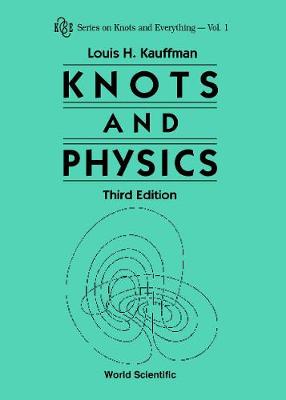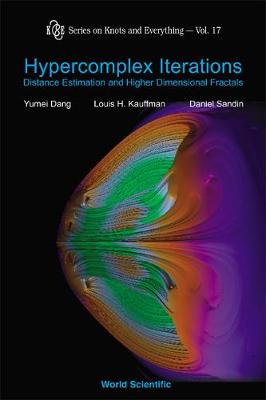Series on Knots & Everything
4 primary works
Book 1
This book is an introductory explication on the theme of knot and link invariants as generalized amplitudes (vacuum-vacuum amplitudes) for a quasi-physical process. The demands of the knot theory, coupled with a quantum statistical frame work create a context that naturally and powerfully includes an extraordinary range of interelated topics in topology and mathematical physics. The author takes a primarily combinatorial stance toward the knot theory and its relations with these subjects. This has the advantage of providing very direct access to the algebra and to the combinatorial topology, as well as the physical ideas. This book is divided into 2 parts: Part I of the book is a systematic course in knots and physics starting from the ground up. Part II is a set of lectures on various topics related with and sometimes based on Part I. Part II also explores some side-topics such as frictional properties of knots, relations with combinatorics, knots in dynamical systems.
Book 1
This invaluable book is an introduction to knot and link invariants as generalised amplitudes for a quasi-physical process. The demands of knot theory, coupled with a quantum-statistical framework, create a context that naturally and powerfully includes an extraordinary range of interrelated topics in topology and mathematical physics. The author takes a primarily combinatorial stance toward knot theory and its relations with these subjects. This stance has the advantage of providing direct access to the algebra and to the combinatorial topology, as well as physical ideas.The book is divided into two parts: Part I is a systematic course on knots and physics starting from the ground up, and Part II is a set of lectures on various topics related to Part I. Part II includes topics such as frictional properties of knots, relations with combinatorics, and knots in dynamical systems.In this third edition, a paper by the author entitled "Knot Theory and Functional Integration" has been added. This paper shows how the Kontsevich integral approach to the Vassiliev invariants is directly related to the perturbative expansion of Witten's functional integral. While the book supplies the background, this paper can be read independently as an introduction to quantum field theory and knot invariants and their relation to quantum gravity. As in the second edition, there is a selection of papers by the author at the end of the book. Numerous clarifying remarks have been added to the text.
Book 17
Hypercomplex Iterations: Distance Estimation And Higher Dimensional Fractals (With Cd Rom)
by Yumei Dang, Louis H. Kauffman, and Daniel Sandin
Published 7 August 2002
This book is based on the authors' research on rendering images of higher dimensional fractals by a distance estimation technique. It is self-contained, giving a careful treatment of both the known techniques and the authors' new methods. The distance estimation technique was originally applied to Julia sets and the Mandelbrot set in the complex plane. It was justified, through the work of Douady and Hubbard, by deep results in complex analysis. In this book the authors generalise the distance estimation to quaternionic and other higher dimensional fractals, including fractals derived from iteration in the Cayley numbers (octonionic fractals). The generalization is justified by new geometric arguments that circumvent the need for complex analysis. This puts on a firm footing the authors' present work and the second author's earlier work with John Hart and Dan Sandin. The results of this book will be of great interest to mathematicians and computer scientists interested in fractals and computer graphics.
Book 53
This invaluable book is an introduction to knot and link invariants as generalized amplitudes for a quasi-physical process. The demands of knot theory, coupled with a quantum-statistical framework, create a context that naturally and powerfully includes an extraordinary range of interrelated topics in topology and mathematical physics. The author takes a primarily combinatorial stance toward knot theory and its relations with these subjects. This stance has the advantage of providing direct access to the algebra and to the combinatorial topology, as well as physical ideas.The book is divided into two parts: Part I is a systematic course on knots and physics starting from the ground up, and Part II is a set of lectures on various topics related to Part I. Part II includes topics such as frictional properties of knots, relations with combinatorics, and knots in dynamical systems.In this new edition, an article on Virtual Knot Theory and Khovanov Homology has beed added.



